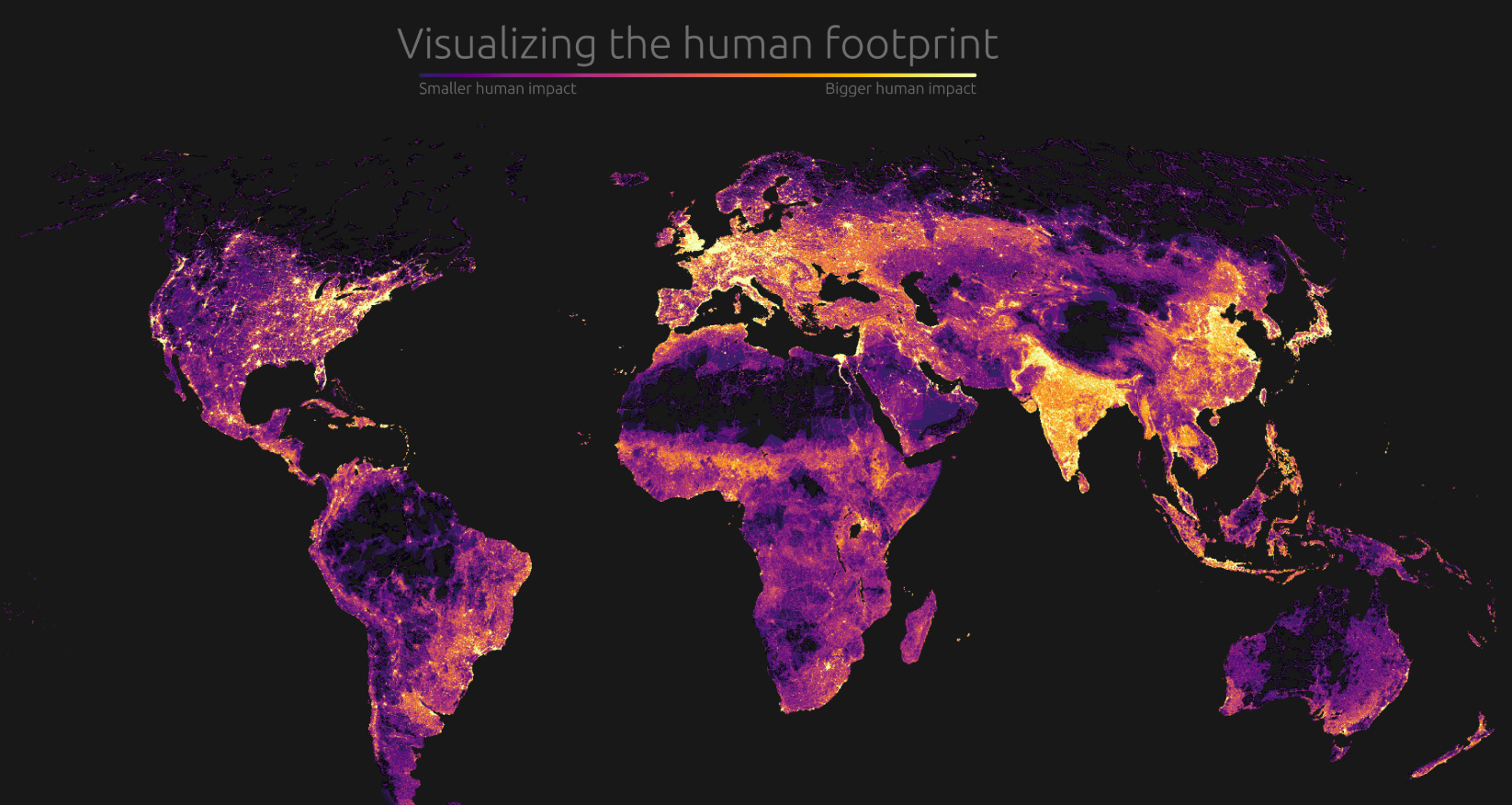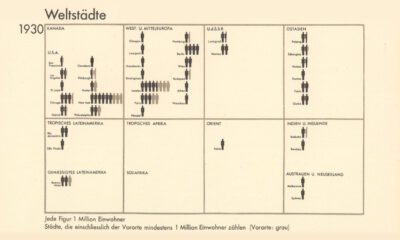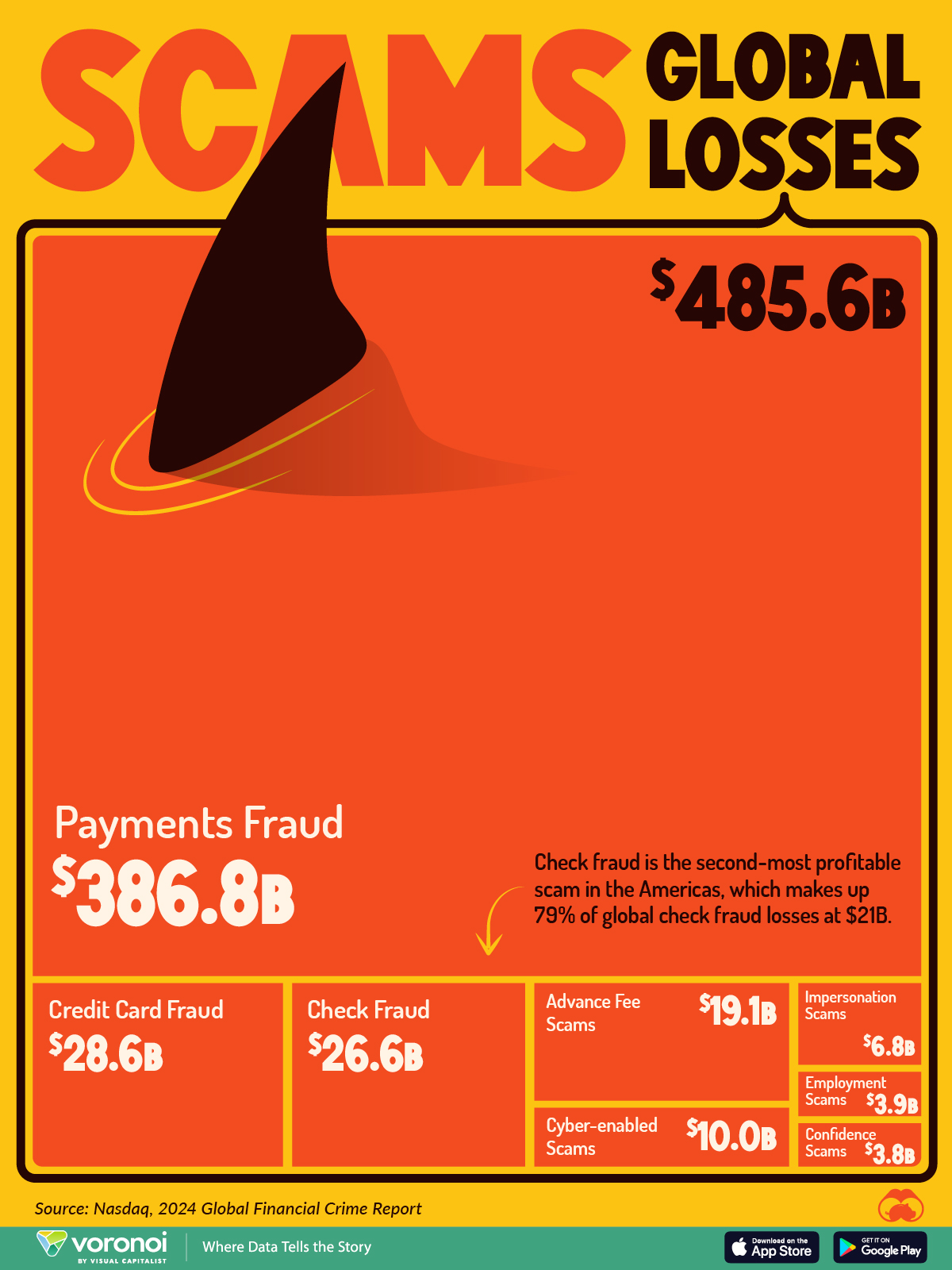Misc
7 Striking Maps that Visualize the Human Footprint
View a high resolution version of this graphic
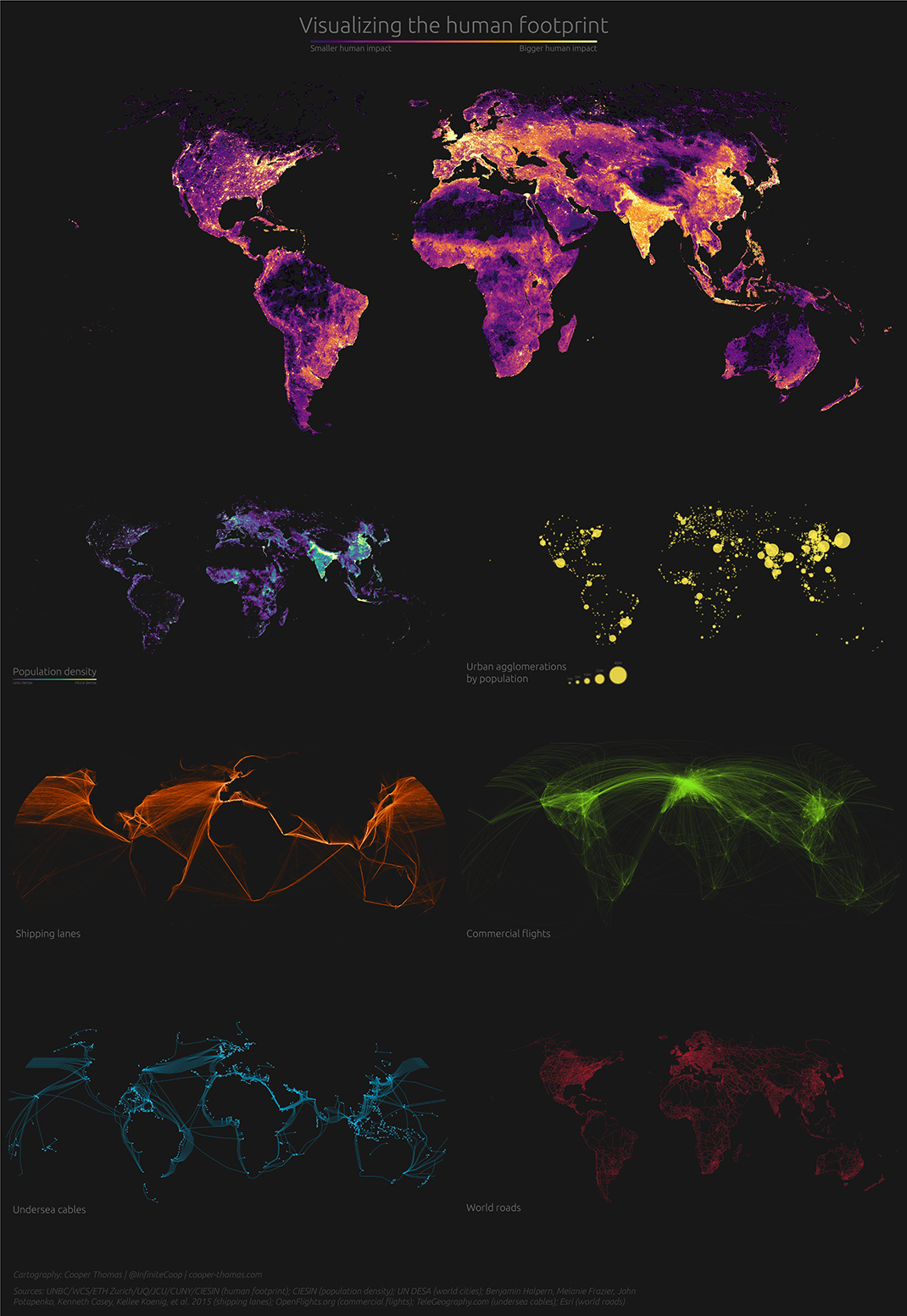
7 Striking Maps that Visualize the Human Footprint
View the high resolution version of today’s graphic by clicking here.
In a short amount of time, humans have changed the face of planet Earth.
Our impact has been so profound, in fact, that scientists have declared the dawn of the Anthropocene epoch, or the age of human influence.
Today’s ambitious graphic comes to us from Reldresal, and it looks at this human footprint from a number of different angles. Here are some of the ones we found most interesting.
Population Density
While there are humans present in nearly every part of the world, the overall distribution of population is far from even. As the map above vividly demonstrates, humans cluster in specific places that have the right conditions to support a large population. Massive river deltas such as Ganges-Brahmaputra (Bangladesh) and the Nile (Egypt) are obvious bright spots on the map.
Not surprisingly, sparsely populated countries like Australia and Canada are nearly indistinguishable as most people cluster in more habitable places.
People and Products in Perpetual Motion
The band of industrialized countries running across the northern hemisphere is highlighted by a bright cluster of shipping and air traffic routes.
When visualized, it’s easy to see how the global flow of people and goods plugs into specific hubs. At the same time, other continents such as South America and Africa have very little connectivity in comparison.
Under the Sea
Since the first undersea cable dipped below the icy Atlantic waves in the mid-1800s, people have been instantaneously transmitting information across oceans. Fiber optic cables form the backbone of the internet, transmitting about 99% of all data.
Without the 400+ submarine cables in service today, our ability to transmit data would be severely restricted.
End of the Road
Paved roads have made some of the most remote swaths of land accessible by vehicle, but there are a few places on Earth that remain poorly connected due to difficult terrain.
The most dramatic example – one of the most obvious “holes” on the road network map – is the Sahara desert. The desert is so inhospitable that building a reliable, fully-paved highway has proved impossible up until this point. For this reason, economic data on Africa is often divided between North and Sub-Saharan.
There is a similar situation in the Amazon, where the Trans-Amazonian highway is the one lonely route connecting the interior of the rainforest. Brazil has rapidly expanded the footprint of their road network in recent years in an effort to open up economic opportunities in the interior of the continent.
For better or worse, this map could look a lot different in future years.
Misc
Visualizing Global Losses from Financial Scams
What are the most pervasive types of financial scams? We break down nearly half a trillion dollars in losses worldwide due to scams in 2023.
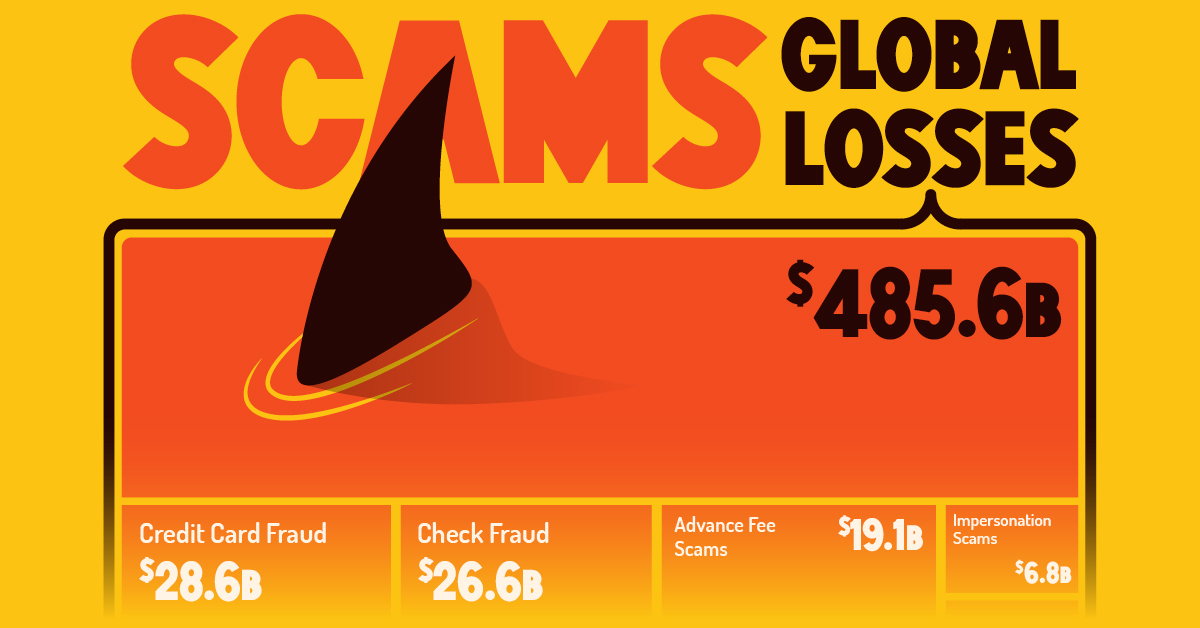
Visualizing Global Losses from Financial Scams
This was originally posted on our Voronoi app. Download the app for free on iOS or Android and discover incredible data-driven charts from a variety of trusted sources.
Last year, financial scams led to almost half a trillion dollars in losses worldwide, roughly equal to the GDP of Singapore.
As fintech has advanced globally, cyber-criminals have exploited various platforms in complex attacks. Often, they will steal customers’ account information on digital payment systems and online banking sites as a highly lucrative form of attack.
This graphic shows the scale of financial losses from scams and schemes, based on data from Nasdaq’s Global Financial Crime Report for 2024.
The Most Common Types of Financial Scams
In 2023, there were $485.6 billion lost in total from financial scams, and below we break down the specific scams that generated the biggest losses:
| Type of Financial Scam/Scheme | Global Losses (USD) |
|---|---|
| Payments Fraud | $386.8B |
| Credit Card Fraud | $28.6B |
| Check Fraud | $26.6B |
| Advance Fee Scams | $19.1B |
| Cyber-enabled Scams | $10.0B |
| Impersonation Scams | $6.8B |
| Employment Scams | $3.9B |
| Confidence Scams | $3.8B |
| Total | $485.6B |
Payments Fraud the Top Financial Scam
Payments fraud makes up a staggering 80% of the total. This type of fraud occurs when payment methods are illegally manipulated to deceive or steal from a person or business.
One example of a key risk point for payments fraud are real-time payments. Here, fraudsters exploit payment systems through rerouting fund transfers. Along with this, cyber-criminals will use “banking trojans” as a primary weapon to hack account information. This type of attack lures users to click on a malicious PDF file, website, or app which steals information on a device.
Interestingly, a separate analysis showed that Brazil was the top country in the world for banking trojan scams, with 1.8 million attempted attacks over the course of June 2022 to July 2023.
Going further, business email compromise, a type of payments fraud, was the source of $6.7 billion in losses in 2023. These types of scams involve fraudsters masquerading as legitimate businesses to deceive unsuspecting customers into sending payments into fraudulent accounts.
Credit Card Fraud
Another key source of financial losses was credit card fraud.
In fact, one of the most common forms of this type of fraud is skimming, where an electronic device can be placed in an ATM which steals information in a cards magnetic strip. On average, skimming costs American consumers and financial institutions $1 billion annually.
-

 Technology6 days ago
Technology6 days agoCountries With the Highest Rates of Crypto Ownership
-

 Mining2 weeks ago
Mining2 weeks agoVisualizing Global Gold Production in 2023
-

 Markets2 weeks ago
Markets2 weeks agoVisualized: Interest Rate Forecasts for Advanced Economies
-

 Economy2 weeks ago
Economy2 weeks agoThe Most Valuable Companies in Major EU Economies
-

 Markets2 weeks ago
Markets2 weeks agoThe World’s Fastest Growing Emerging Markets (2024-2029 Forecast)
-

 Markets1 week ago
Markets1 week agoVisualizing Global Inflation Forecasts (2024-2026)
-

 Misc1 week ago
Misc1 week agoCharted: What Southeast Asia Thinks About China & the U.S.
-

 Misc1 week ago
Misc1 week agoThe Evolution of U.S. Beer Logos

